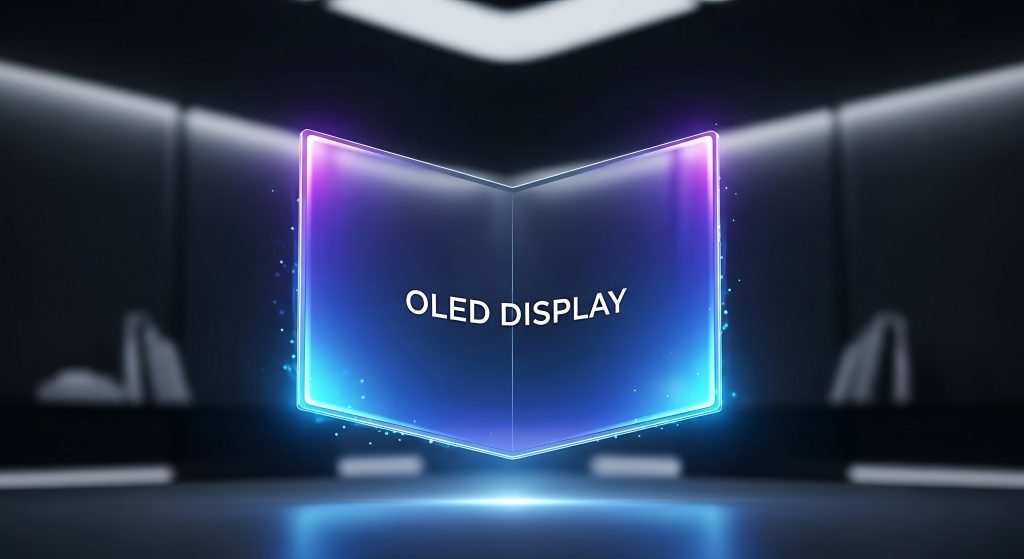You see them in tech videos: sleek screens that bend and fold. They look like the future. But they cost a lot. Is a premium foldable monitor a smart buy or just a cool gadget?
This article looks at the real value. We will see if the high price is justified.
What is a Foldable Monitor?
A foldable monitor is a screen you can bend. Some fold in half like a book. Others roll up. The most common type is a large screen that folds into a more portable size.
They use flexible OLED technology. This allows the screen to bend without breaking. It’s different from a traditional rigid monitor.
The Benefits: Why People Want Them
The main advantage is portability and space saving. A large screen that folds down is easier to carry. It also takes up less room on your desk when not in use.
They are versatile. You can use it as a large desktop monitor. Then, fold it and take it to a meeting or a coffee shop. This is great for people who work in different places.
The screens are often high quality. They usually have OLED panels. This means perfect blacks, vibrant colors, and fast response times.
The High Cost: What You’re Paying For
You are paying for new, complex technology. Making a flexible, durable screen is hard. The research and development costs are high.
You are also paying for premium materials. The hinge mechanism must be perfect. It must last for thousands of folds without breaking. This engineering isn’t cheap.
Early adopters always pay more. The price will likely come down over time.
The Drawbacks and Concerns
The biggest worry is durability. Will it break? Most companies test them for thousands of folds. But it’s still a new technology. Long-term reliability is a question for some people.
There is a risk of creases. Over time, a permanent line might appear where the screen folds. This has been an issue with foldable phones.
They are expensive. You could buy two or three very good traditional monitors for the price of one high-end bendable monitor.
Who Are They Really For?
Foldable monitors are not for everyone. They are a niche product for specific users.
They are worth it if:
- You are a digital nomad who needs a large screen on the go.
- You have a very small desk and need to save space.
- You are a tech enthusiast who wants the latest innovation.
- Your work requires a highly portable, large display.
They are not worth it if:
- You have a fixed desk and don’t move your monitor.
- You are on a tight budget.
- You are worried about long-term durability.
For many, a standard vertical monitor setup is a more practical and affordable choice.
A Quick Tip Before You Buy
Think about how you really work. Do you actually move around that much? Or would a good portable monitor and a home setup work just as well?
Also, wait for reviews. Let other people test the durability first.
Frequently Asked Questions
Q: Do the creases go away?
On the best models, the crease is barely visible when the screen is on. You notice it more when the screen is off. It may become more pronounced over time.
Q: Can you use it as a primary monitor?
Yes, absolutely. When unfolded, it works just like any other high-quality monitor. The fold doesn’t affect the image quality in the areas you’re looking at.
Q: How many times can it fold?
Most are tested to withstand over 30,000 folds. That’s years of folding it multiple times a day.
Q: Are they heavy?
No, that’s a key benefit. They are designed to be very thin and lightweight, which is what makes them portable.
Q: What about screen protection?
You have to be more careful. You can’t use a traditional rigid screen protector. Some have special flexible screen protectors pre-installed.
The Bottom Line
Premium foldable monitors are incredible pieces of technology. They offer a unique combination of a large screen and portability.
Right now, you are paying a premium for that innovation. For most people, the high cost is hard to justify. You can get a fantastic traditional monitor for much less.
But if you are the specific user who needs a big screen that can travel, and money is less of an object, then yes, it might be worth the price for you. It’s less about need and more about wanting a specific, futuristic way to work.
Caroline is doing her graduation in IT from the University of South California but keens to work as a freelance blogger. She loves to write on the latest information about IoT, technology, and business. She has innovative ideas and shares her experience with her readers.






